全站搜索
Search the entire website
Search the entire website
Andesite is the name of a family of fine-grained, extrusive igneous rocks that are usually light to dark gray in color. They have a mineral composition that is intermediate between granite and basalt. Andesite is a rock typically found in volcanoes above convergent plate boundaries between continental and oceanic plates.
ZONEDING MACHINE focuses on manufacturing stone processing equipment. ZONEDING MACHINE is committed to helping businesses like yours overcome challenges, especially in building crushing plants for hard rocks like andesite. Andesite is a very hard rock that can quickly wear down machinery. You want to crush andesite efficiently, reduce costs, and produce good products that your customers need. This article will explain how ZONEDING MACHINE’s equipment and solutions can help you handle this challenging rock.
Here are very common andesite crushing plants for reference. They have been proven by practice in lots of quarries. And they have the advantages as follows:
Andesite is a tough rock. It is very hard. It is also very abrasive. This means it acts like sandpaper on metal parts. Think of crushing hard, rough stone all day. This puts a lot of stress on machines. It makes the parts that touch the rock wear out quickly. Parts like the plates in a crusher or the screens that sort rock sizes wear down fast.
This high wear is the main problem with Andesite. It means you have to replace parts often. Replacing parts costs money for the new part. It costs money because you have to stop the plant to change the part. Stopping production means you lose money. So, you need machines built strong enough for this rock. You need a process that helps reduce wear. You need a plan to manage replacing worn parts. Handling Andesite is harder than crushing softer stone. It needs the right equipment and a smart plan.
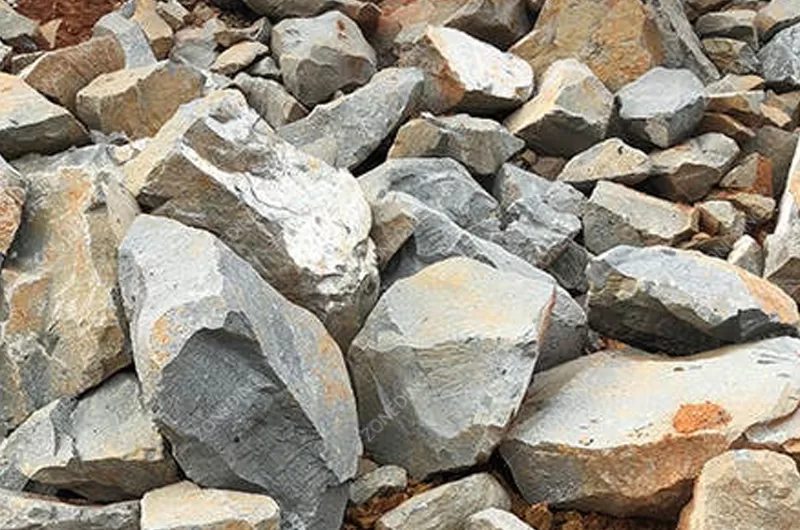
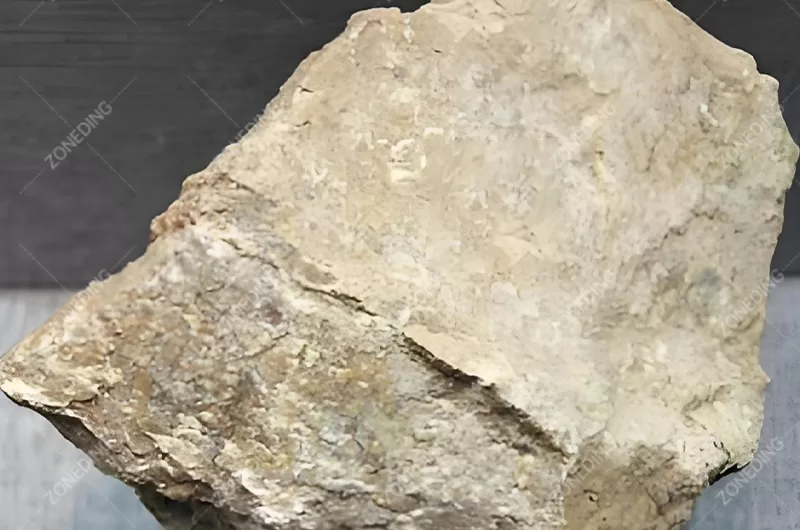
Andesite gets its toughness from its makeup. It has hard minerals inside. These minerals scratch and grind against machine parts. The rock is hard, so breaking it takes a lot of force. The rock is abrasive, so this force causes parts to wear away quickly. It is like rubbing two rough stones together under high pressure. This is happening inside your crushers and on your screens.
High hardness means machines need to be strong. The crusher body must be tough. The parts that move must handle heavy loads. High abrasion means the parts that touch the rock must be made of special materials. These materials resist wear better. But even the best materials wear down over time with Andesite. This is why managing wear is not just a small detail. It is a main part of making a profit when crushing Andesite. You need to expect high wear and plan for it.
You need machines built for hard work to crush Andesite. Not all crushers can handle this rock well. The machines that work best use strong forces to break the stone. They also have parts made to resist wear. For the first step, taking big rocks from the mine or quarry, a Jaw Crusher is often the best choice. It uses strong plates to squeeze the rock until it breaks. A jaw crusher is built very strong. It can handle large, hard pieces.
After the jaw crusher, you need to break the rock into smaller sizes. For this, Cone Crushers are widely used. They use a cone shape that moves inside a bowl. This squeezes the rock in a circular motion. Cone crushers are very good at breaking hard rock into smaller, consistent sizes. They are also designed with wear-resistant parts inside. If you need to make very fine sand or improve the shape of the crushed stone, a VSI Sand Making Machine might be used in the last step. These machines break rock by throwing it at high speed against hard surfaces or other rocks. For Andesite, the wear parts in a VSI crusher are very important. These machines are the workhorses for crushing hard stone like Andesite.
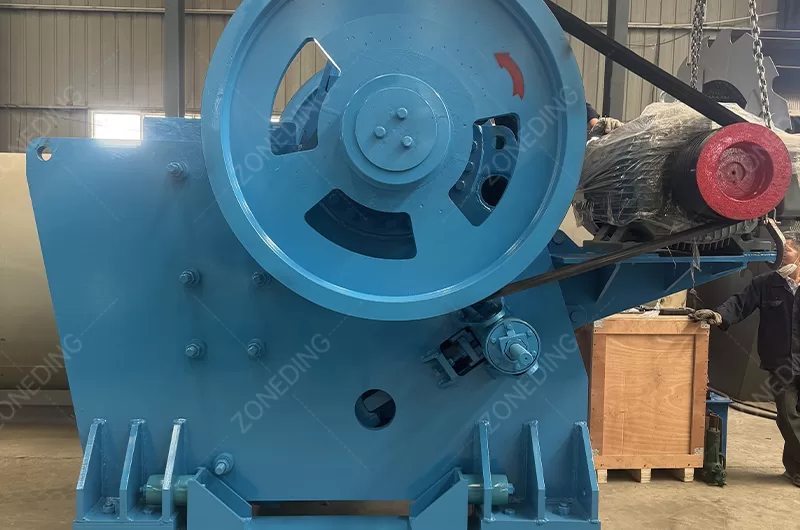
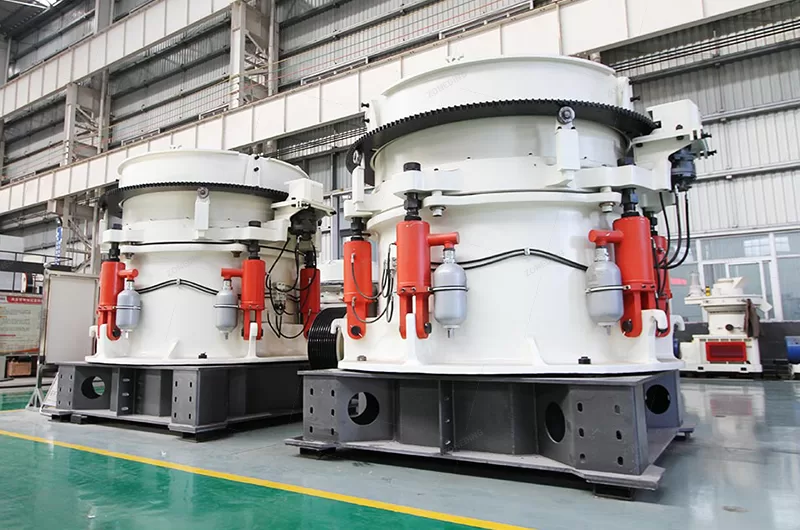
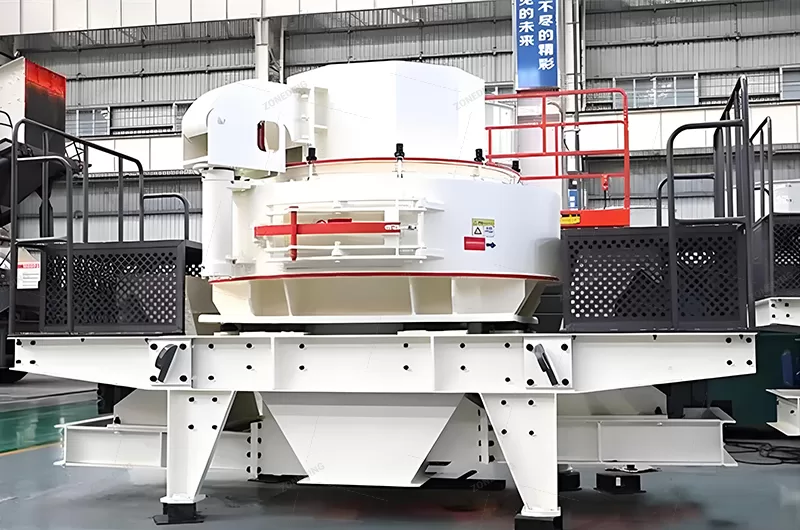
Think of a Jaw Crusher as the primary breaker. It takes big rocks that are fed into the plant. It breaks them into smaller rocks, maybe the size of your fist or head. It works like a big metal mouth chewing rock. It uses a lot of force. It reduces the rock size significantly in one step.
A Cone Crusher comes after the jaw crusher. It takes the medium-sized rocks that the jaw crusher made. It breaks them down further into smaller pieces. It also helps make the rock pieces a better shape for building (more like cubes). It works by squeezing the rock between two surfaces, one moving and one fixed. You can adjust the gap to change the size of the final product. Both types are needed in a typical Andesite plant. They work together to break the rock down step by step.
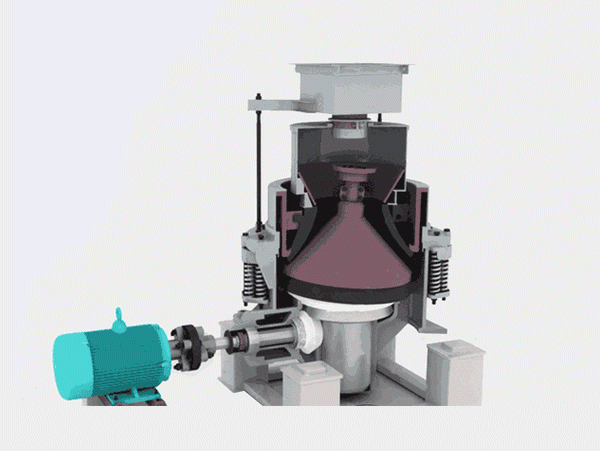
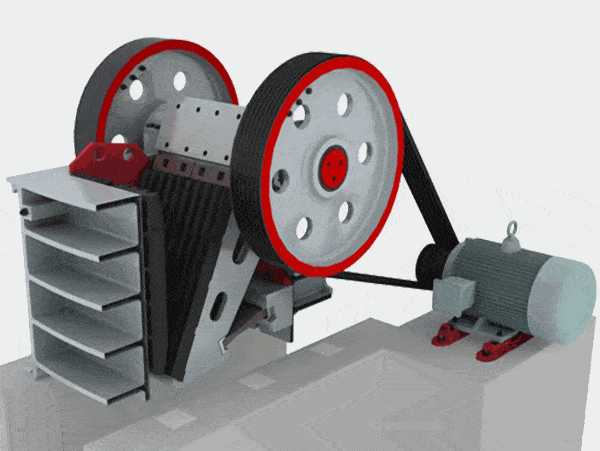
Wear is a main cost when crushing Andesite. The hard, abrasive rock wears out the parts that touch it. This means you spend money on new parts. You also lose money when the plant stops to change parts. You need a plan to reduce this wear and manage the cost. It is not possible to stop wear completely with Andesite. But you can make it less expensive. You can choose equipment designed to handle high wear.
The material of the wear parts is very important. Parts like crusher liners and screens should be made of materials that resist abrasion well. High manganese steel is common. Special alloys might last longer, but they cost more initially. You need to calculate which one is cheaper per ton of Andesite processed. A part that costs more but lasts much longer can save you money overall. Also, how you feed the crusher matters. Feeding the crusher evenly helps reduce uneven wear. Using a Vibration Feeder can ensure a steady flow. Removing fine material before it enters the crusher using a screen helps too. Fine material can increase wear in some crushers. Taking care of your machines helps reduce wear. Follow the maintenance plan. These steps help make wear costs lower per ton.
Choosing the right material for parts that touch the rock is key. For Jaw Crusher jaws and Cone Crusher liners, high manganese steel (like Mn13, Mn18, Mn21) is standard. Higher manganese content usually means better wear resistance, especially with impact. For parts in Impact Crushers or VSI Sand Making Machines, materials like high chromium cast iron are sometimes used. These resist abrasion very well.
But the best material depends on the specific Andesite. Some Andesite is harder, some more abrasive. The speed of the machine also matters. High-speed machines cause more abrasive wear. You need to talk to experts. They can look at your rock and suggest the best material for your wear parts. Remember, you pay for the part and you pay for stopping work to change it. A longer-lasting part means fewer stops. It means more time making product. So, the cost per ton is the number to watch.
An efficient Andesite crushing plant works smoothly. Material moves from one step to the next without delays. The machines are balanced. No one machine is waiting for material while another one is full. Designing this flow is important for high output and steady production. A typical plant starts with a Vibration Feeder. This sends rock from a pile into the first crusher at a steady rate.
The rock goes into a Jaw Crusher first. After jaw crushing, the rock goes to a Vibrating Screen. The screen sorts the rock by size. Pieces that are already small enough skip the next crusher. This is called pre-screening. It is good for efficiency and reduces wear on the second crusher. Bigger pieces go to the second crusher, usually a Cone Crusher. There might be more screens and crushers after this depending on the final size you need. Having stockpiles (piles of material) between steps helps keep the flow smooth if one machine temporarily slows down or stops. This multi-step process with screening at the right points makes the plant efficient. It helps you get high output of the sizes you want.
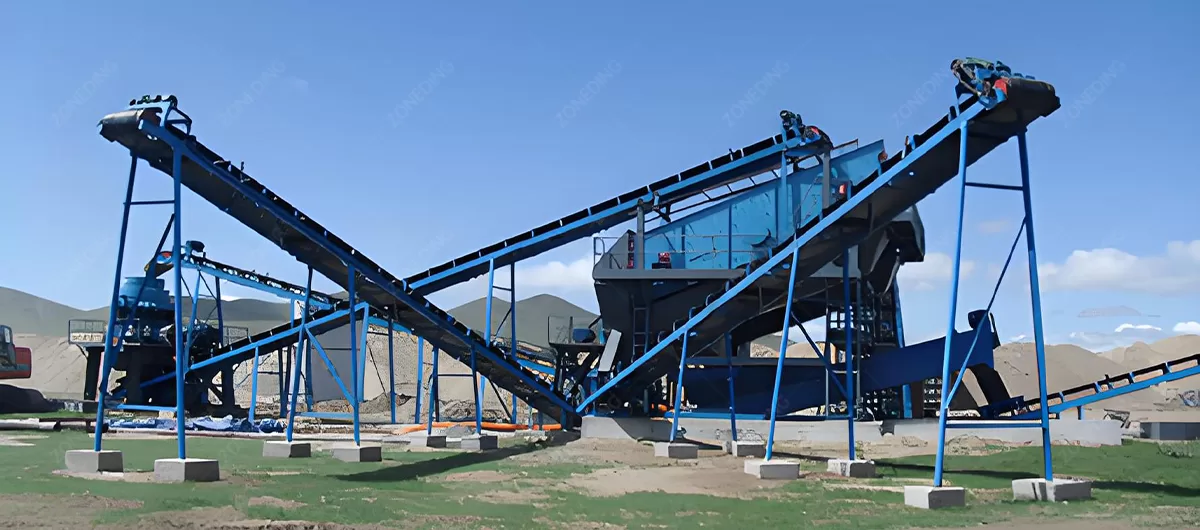
For hard rock like Andesite, the process flow is key to success. You start with big rocks. You break them down gradually. Each step uses the right crusher for that size range. A common flow is:
Breaking hard rock uses a lot of energy. Most of this energy comes from electricity to run the motors on the crushers, screens, and conveyors. Power cost is a big part of running an Andesite crushing plant. You want to get the most crushed rock for the energy you use. This makes your plant more profitable. There are ways to use less power or use it more smartly. You need machines that are designed to be energy efficient.
Modern crushers use advanced designs that break rock more efficiently. They use less power to do the same amount of work compared to older machines. Making sure the plant runs smoothly also saves energy. When material flows without stopping and starting, machines run at their best efficiency. Blockages or surges in material flow waste energy. Using variable speed drives on some motors can save power. These adjust the motor speed based on how much material is running through. When there is less material, the motor uses less power. Regular maintenance keeps machines running efficiently. A machine that is not well-maintained might use more power to do the same job. Thinking about energy use in design and operation helps cut costs.
Andesite is often used to make aggregate for construction. High-quality aggregate is needed for roads, buildings, and concrete. Quality means the rock pieces are the right size mix (gradation) and have a good shape (cubical, not flat or long). Hard rock like Andesite naturally breaks into pieces with sharp edges. Making them cubical needs the right equipment. You need to make aggregate that meets strict standards.
After primary and secondary crushing, the rock pieces might not be perfectly shaped. They can be too flaky or needle-like. For high-quality aggregate, you might need a third stage of crushing. Machines like special Cone Crushers designed for shaping, or a VSI Sand Making Machine, are used. These machines use different ways to break the rock that create more cubical pieces. Screening is also vital. Vibrating Screens sort the crushed rock into exact sizes. This ensures you get the correct mix of sizes needed for concrete or asphalt. A well-designed crushing and screening process ensures your Andesite aggregate is the right size and shape for demanding projects. This high-quality product can be sold for a better price.
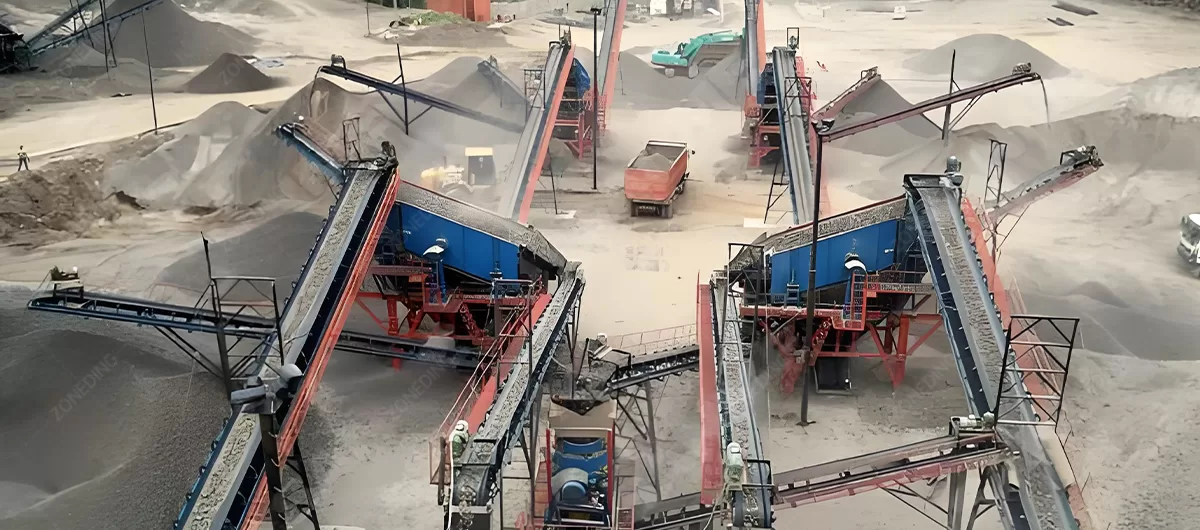
Andesite usually breaks into angular pieces. For many building uses, like high-strength concrete or asphalt, cubical pieces are better. Flat or long pieces can make the final product weaker. Machines that use impact or attrition work well for shaping. A VSI Sand Making Machine is very effective at this. It throws rock against a hard surface or a bed of rock at high speed. This breaks off corners and makes the pieces more round and cubical.
Some Cone Crushers are also designed to improve particle shape in the final crushing stage. The way the crushing chamber is shaped and how the crusher is operated affects the final product’s shape. You need to balance getting a good shape with wear on the machine parts. Making cubical Andesite aggregate requires specific steps and the right machines after the initial breaking stages.
Running an Andesite crushing plant has costs that add up. The main ones are power for the machines, wear parts that need replacing, paying workers, and fixing machines (maintenance). Because Andesite is hard and abrasive, wear part costs are often higher than with softer rock. Power consumption is also significant because it takes force to break hard rock. To make a profit, you need to keep these costs low per ton of rock you produce.
Saving money means being smart about how you operate and maintain your plant. Choose machines and wear parts known for durability with hard rock. This reduces how often you buy and change parts. A smoothly running plant with good flow uses less power and reduces stress on machines. This means less wear and fewer breakdowns. Regular, planned maintenance is cheaper than fixing unexpected major failures. Train your workers well. Skilled operators can run the plant more efficiently and spot problems early. Keep inventory of common wear parts. This avoids long stops waiting for parts. All these actions help lower the cost to produce each ton of Andesite aggregate. Lower costs mean higher profit.
When thinking about costs, look beyond the price of a machine or a spare part. The real cost is how much it costs to produce one ton of finished product. This includes all expenses divided by the total tons produced over a time period. For wear parts, calculate the cost of the part plus the labor and lost production time to change it, then divide that by the tons processed during the part’s life. This gives you wear cost per ton.
Do the same for power. Divide the electricity bill by the tons produced. Add labor costs per ton. Add maintenance costs per ton. Sum these up for the total operating cost per ton. This number is key. A cheaper machine initially might have higher operating costs later due to high wear or power use. A slightly more expensive machine with better wear parts and higher efficiency might be cheaper in the long run. ZONEDING focuses on building machines that offer a low total cost per ton, especially for hard rock like Andesite.
Sometimes, you need to crush rock in different places. Maybe the quarry changes work areas often. Maybe you work on temporary projects like road building. In these cases, a fixed crushing plant built in one spot might not be the best. Mobile crushing plants are an option. These are crushers, screens, and conveyors built on wheels or tracks. They can move from one place to another. This can save time and money on transporting rock.
For Andesite, you can get mobile versions of tough crushers like jaw and cone crushers. A Mobile Jaw Crusher can do the primary crushing right at the quarry face. Then, a Mobile Cone Crusher can do the secondary crushing nearby. This reduces how far you need to haul the large raw rock. Hauling raw rock is usually more expensive than hauling smaller, crushed rock. Mobile plants are good for projects where you move often or crush material spread out over an area. They cost more to buy than fixed plants of the same size. They might also use more fuel (diesel) if they have their own engines. But the savings on transport can make them very cost-effective for the right job.
Choosing between a mobile and a fixed plant for Andesite depends on your project.
When you are buying a plant to crush hard, abrasive rock like Andesite, the supplier’s experience is key. You need a partner who understands the challenges of this material. They should have a history of building plants that work well with hard rock. An experienced supplier knows which machines will last with Andesite. They know how to design a plant layout that reduces wear and runs efficiently. They understand the importance of wear parts and can advise on the best materials.
Look for a supplier who has built plants for similar hard rock projects before. Ask them about their experience with Andesite specifically if possible. They should have technical experts, engineers who can look at your rock sample and design a custom solution. They should offer full support, from planning and design to building the machines, helping with installation, training your team, and providing parts and service over the years. Handling hard rock is demanding on equipment. You need a supplier whose machines are proven in tough conditions. ZONEDING has been making mineral processing equipment since 2004. We have designed and built many plants for hard and abrasive materials. We have the engineers and the manufacturing strength to build robust plants for Andesite.
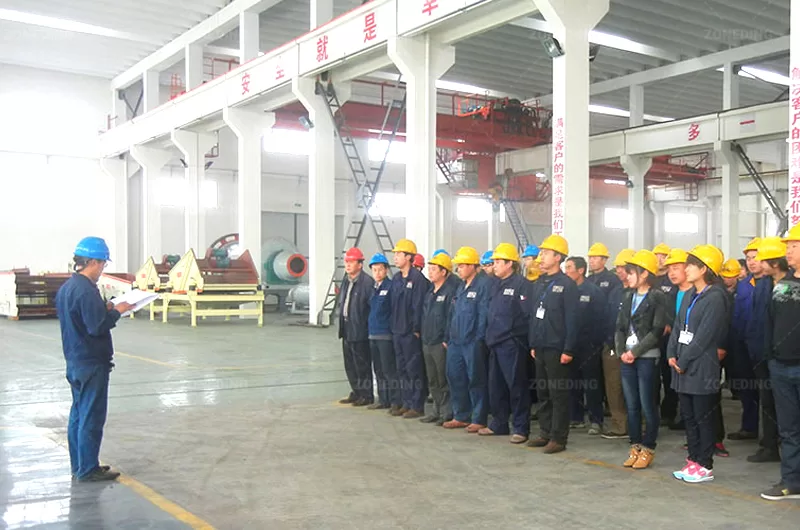
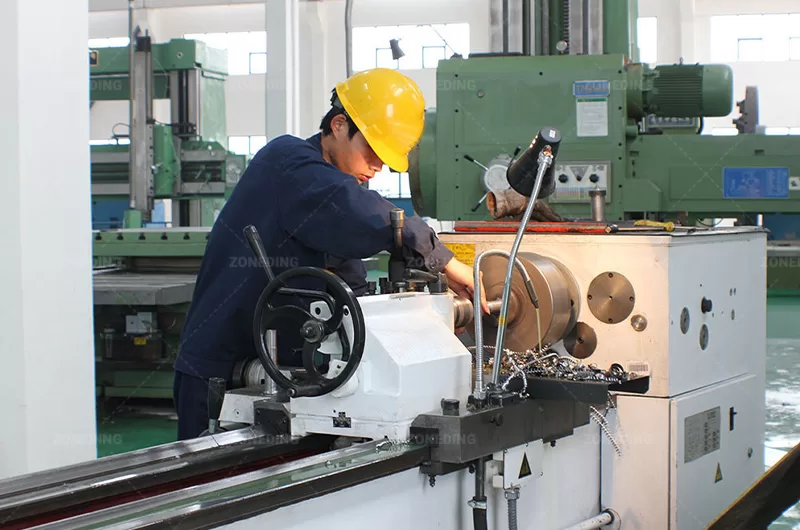
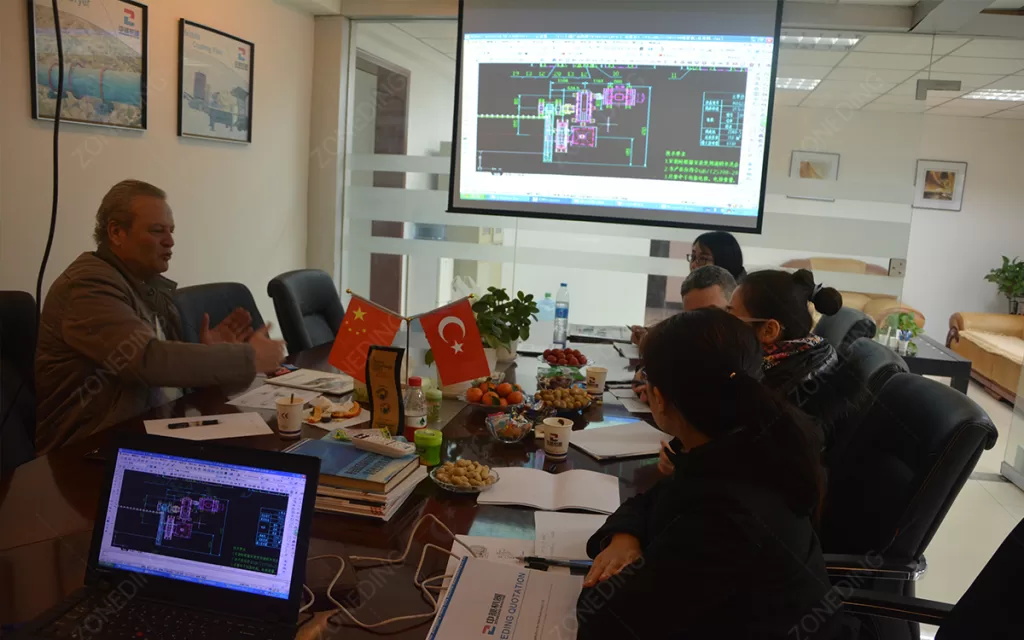
Q 1: Why are wear parts so important for Andesite crushing?
Andesite is hard and abrasive. It causes the parts that touch the rock inside crushers and screens to wear out quickly. Managing wear parts costs and replacement time is key to profitability.
Q 2: What is the best crusher for Andesite?
For primary crushing of big Andesite rocks, a Jaw Crusher is best. For secondary and tertiary crushing to smaller sizes and better shape, Cone Crushers and VSI Sand Making Machines are recommended for Andesite.
Q 3: Can mobile crushers process Andesite?
Yes, mobile versions of tough crushers like Mobile Jaw Crushers and Mobile Cone Crushers are built to handle hard rock like Andesite. They are good for projects requiring movement.
Q 4: How can I make high-quality Andesite aggregate?
To make good Andesite aggregate with the right size and shape, you need a multi-stage crushing process using crushers like cone crushers or VSI machines for shaping, plus accurate Vibrating Screens for sorting sizes.